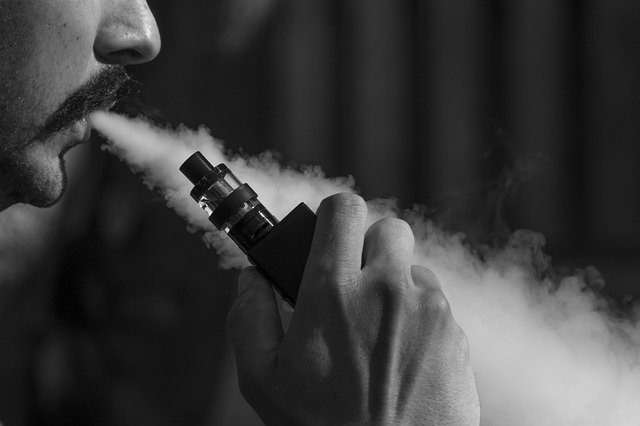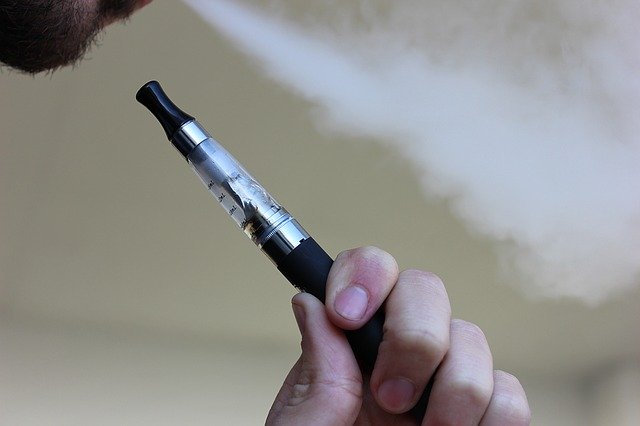Vaping is a new trend in the market, having been around for more or less than just a decade. Because it is new and conveniently posed as an alternative to smoking, people have been quick to shift and patronize it. This has made the vape industry balloon up to a multi-billion-dollar value and vaping as a multi-cultural social activity across many countries.
Despite this, there’s still a lot of things that the majority don’t know about vaping. Most of them are misconceptions that need clarification because even though vaping is widely accepted already specially with proper nicotine prescription, it is still facing a stigma of treating it like smoking. Hopefully, people will become more well-informed on the topic to let them decide for themselves whether vaping is right for them or not and if it’s a good alternative to smoking.
Vaping is the act of inhaling and exhaling the aerosol, often referred to as vapor, which is produced by an e-cigarette or similar device (Center on Addiction, 2018). It does this by heating up a wicking material (usually cotton) soaked with e-juice for flavoring. Unlike smoking, vaping does not produce tobacco smoke, but rather an aerosol, that consists of fine particles.
With its growing popularity in the market, vaping and the use of e-cigarettes have also been drawing a lot of attention from both private and public sectors regarding its effects on health and the environment.
Every discussion of vaping should open with a comparison to cigarette smoking. This is important for two reasons. First, it’s important because vaping is posed as an alternative to smoking cigarettes. Second, the majority of vapers are smokers or ex-smokers.
Unfortunately, there are still not enough studies that conclusively apply a direct comparison between vaping and smoking. All we have as of now are just correlations with smoking and most research is still ongoing. Hence, the available information on vaping must be measured against the available information on cigarette smoking, rather than in isolation to draw a clearer picture.
It’s a well-known fact that smoking is bad for you with many health risks, but is vaping harmful too? How does vaping affect your health? In what aspects is it similar or different from smoking? In search of answers to these questions and to have clarity, we have to have a comprehensive comparison of vaping and smoking.
Similarities Of Vaping And Smoking
Perhaps the most observable similarity of vaping and smoking is the act itself. Vaping simulates traditional smoking. E-cigarettes also called “cigalikes”, are designed to resemble cigarette sticks. The user inhales and exhales the aerosol, inaccurately called vapor, that the vaping device produces through heating, not combustion burning. This is often mistaken as smoke, but it’s not.
The next similarity, as close as it may be, is that they both contain nicotine. However, it is important to note that in vaping, you can choose a nicotine-free vape juice to use. Nicotine is a substance in tobacco products that is responsible for its addicting effect, like caffeine in coffee. In traditional smoking, nicotine and other chemicals undergo combustion that stimulates a chemical reaction. This makes them dangerous when inhaled. Vaping, however, does not involve combustion burning, thus eliminating the harmful effects of nicotine, cigarette stains, and tar that you can get from cigarette smoke. That being said, vaping is not without some potential health risks.
Differences In Vaping And Smoking
Chemical Composition
In smoking, the combustion of tobacco produces thousands of chemicals, more than 70 of which are extensively recognized to cause cancer. These chemicals are called “carcinogens”. Some of these are;
Nicotine, Hydrogen Cyanide, Formaldehyde, Lead, Arsenic, Ammonia, Benzene, Carbon Monoxide, Nitrosamines, Polycyclic aromatic hydrocarbons.
As mentioned above, many of these chemicals have a strong link to some leading health conditions, including; cancer, lung disease, heart disease, diabetes, and more.
In vaping, the absence of combustion eliminates the harmful effects of nicotine and other chemicals. This is not to say that vapes don’t contain chemicals with potential risks. Analysis of aerosol produced from vaping suggests that there is a number of carcinogens found but are significantly lower that can pose serious health threat compared to cigarette smoke. Some of these are:
Nicotine, Vegetable Glycerin, Propylene Glycol, Acetaldehyde, Nitrosamines.
Other chemicals found in vape juice are mostly used for flavoring. Many of which are found to be food grade and generally safe to consume. However, these flavorings are designed to be ingested and not vaporized. Thus, clear studies on the matter are still needed. The effects of these chemicals in aerosol form are just not yet known.
Health
Whether you’re taking combusted smoke or aerosol, there are going to be some quite serious health implications that come along with it. The health implications of smoking are a lot more defined and outlined than with vaping in the long term.
Smoking’s only mechanism is burning and inhalation, and that leads the user to be exposed to the toxic chemicals that the burning tobacco contains. Undisputably, this causes multiple health problems including many types of cancers, lung disease, heart disease, and more.
Another health concern is second-hand smoke, which is even argued to be more harmful than first-hand smoking. Smoking has the tendency to be indiscriminate because the user cannot control the smoke or the smell. This places the health of the user and the people around them at serious risk.
On the other hand, as mentioned above, vaping’s mechanism does not include burning combustion. This removes the harmful chemical reactions that traditional smoking has. However, health risks are still present with vaping. But there are no definitive diseases or health-related record yet.
Safety
Smoking is known to be the leading cause of many diseases but you should also know that it is also the primary cause of fires and fire-related injuries in the world. This is evident in the legislation and regulatory laws that have been passed and implemented to curb the hazardous risks of smoking to health, safety, and the environment. Designated areas are assigned in public places for smoking individuals. Most establishments are also becoming proactive in preventing such hazards by completely prohibiting smoking.
The only safety-related incidents with vaping are the explosion of batteries that are unfortunately caused by the user’s error. Defective batteries, overcharging, and improper vaping practices are often the causes of the reported explosions. Proper vaping and charging practices plus patronization of legitimate products can highly help in avoiding these accidents.
Cost
Vaping devices are more expensive upfront. This is because you are going to have to buy the “hardware” first. However, this is largely a cheaper investment compared to the disposable nature of smoking cigarettes as seen in the long run.
Smoking – According to the Centers for Disease Control and Prevention, the average cost of a pack of cigarettes is $6.28, which means a pack-a-day habit sets you back $188 per month or $2,292 per year (The Balance, 2019).
Vaping – To purchase an e-cigarette starter kit that will last at least a year, you would have to spend around $50. An average e-juice can set you at $15 per bottle amounting to $60 a month or $720 a year.
From the calculations above, you can see that vaping is much cheaper and a cost-effective alternative for smoking. You have full control of the amount of e-juice to consume and the variation of design or upgrade to parts and systems. Ultimately, the total cost will greatly depend on your vaping habit.
Types Of E-Cigarettes And Vaping Devices
There are many configurations and designs for e-cigs and vaping devices. The most popular among users is the cigalike (cigarette-like) style because of its compact design that is easy to use, carry, and provides style and convenience. Another style rising in popularity is the Box MODs, which are more commonly used by experienced vapers. The two basic styles of MODs are: regulated and unregulated. Both styles have bulkier designs than pen-style or any other e-cigs.
These are the common types of e-cigs and devices in the vaping market today:
E-Cigarettes
E-cigarettes are the most common vaping devices in the market. They are similar to a cigarette in shape and size, referred to as “cigalikes”. These can either come in one-piece designs, which are typically disposable or two-piece designs, which come with cartridges that can be replaced.
Pod Style Vapes
A pod vape is a two-piece device consisting of a battery and a replaceable and often refillable pod. Pod vapes are cheaper and easier to use with a higher level of performance than most e-cigarettes. They are considered to be one of the most practical designs that hit the market.
Pen-Style Vapes
Pen-style vapes are often confused with cigalikes because of resemblance. But the distinction should always be that pen-style vapes are larger and perform better than cigalikes. They usually comprise of two parts: the battery and the tank. These can be detachable or come in an all-in-one design. Vape pens are designed with internal batteries but since they have a relatively small size, their battery capacity is limited.
Box MODs And Mini MODs
These kits are larger and more capable devices. They usually fit intermediate to advanced vapers. The extra size entails better performance and longer battery life. Most box MODs come with settings and features such as variable wattage or temperature control.
High Wattage Box MOD
One of the most popular vapes on the market, high wattage box MODs are box MOD starter kits with the extra power from additional batteries. Usually, high wattage box mods are paired with tanks that take replaceable coils, but they are also paired with rebuildables such as RTAs, RDAs, or RDTAs. The number of batteries dictates the size and power limits of the device; most high wattage box mods take two to three batteries.
Regulated Squonk
Technically, regulated squonk starter kits are a sub-category of box MODs but they have become so popular that they have created their own category. Most squonk kits come in single battery configuration, but dual-battery squonkers are becoming more popular lately.
Starter Kits
Starter kits are bundles of all the necessary tools a user can buy to start vaping, except the e-juice. These kits are specifically designed to get a beginner start vaping without so much fuss.
Starter Kits Are, Of Course, The Best For Beginners Because They Are:
Simple – they are designed to be self-explanatory to all users.
Easy to use – they are easy to operate with the simplest and most convenient features possible, allowing beginners to understand all its mechanisms from the get-go.
Portable – starter kits enable the user to easily carry them wherever.
Affordable – the price for starter kits are considerably lower compared to the kits designed for advanced vapers.
If you are a beginner, it is highly recommended that you follow the guide accordingly. Not that it’s an imposed rule but there’s a learning curve with vaping, and it is best to learn and enjoy it as safe and clear as possible.
Best starter Kits For Beginners
To give you a headstart, we’re going to recommend 3 starter kits from a reputable company to ease your worries. This has been tested, proven, and trusted across vaping communities.
Vaporesso is a globally known vaping company created by SMOORE in 2013. With over 13 years of inherited experience and a world-class team of researchers and experts, moved by the top of the line equipment and 13,000 workers, the company is a leading brand of innovative and top quality vaping products in the market today. That being said, check out these recommendations we’ve picked for you.
1. Renova ZERO Pod System
It is a starter kit that has been gaining a lot of praise from users, both beginners and experts. It has an ultra-compact, all-in-one design suitable for both standard and nicotine-based e-juice. It is an automatic draw device that delivers outstanding flavor and vapor. Its modern design and ease of use make it a great choice for beginners.
2. Vaporesso Click
Considered as one of the best-designed starter kits, the Vaporesso Click employs the simplicity of PTF (Press To Fill) mechanism and the ease of cover design as protection to the mouthpiece. By conveniently placing the filling slot on the top, the user doesn’t have to take the pod out to refill. This eliminates the chances of spillage. This is great for those who are not yet inclined to vape or to those who just prefer impeccable convenience.
 3. Podstick
3. Podstick
The Podstick is a fusion of pod and pen styles. Both styles offer superb convenience to the user including PTF mechanism via sliding the top cover. In addition, the meshed pods allow the user to choose the volume of vape hits to take.
Final Take?
Vaping reasonably has more advantages than smoking but it is not to say that it comes without potential risks. Since studies are still going on and more definitive pieces of evidence are still needed to be gathered, it leaves us to asses our own choices as responsible as we can. Companies and the vaping community are helping each other to provide really good vaping experience possible from innovation in chemical compositions and devices. There are many kits that provide convenience and ease to beginners up to the most advanced users. There’s always something for everyone. At the end of the day, it is still up to us to make our own decisions and make it worth the shot.




